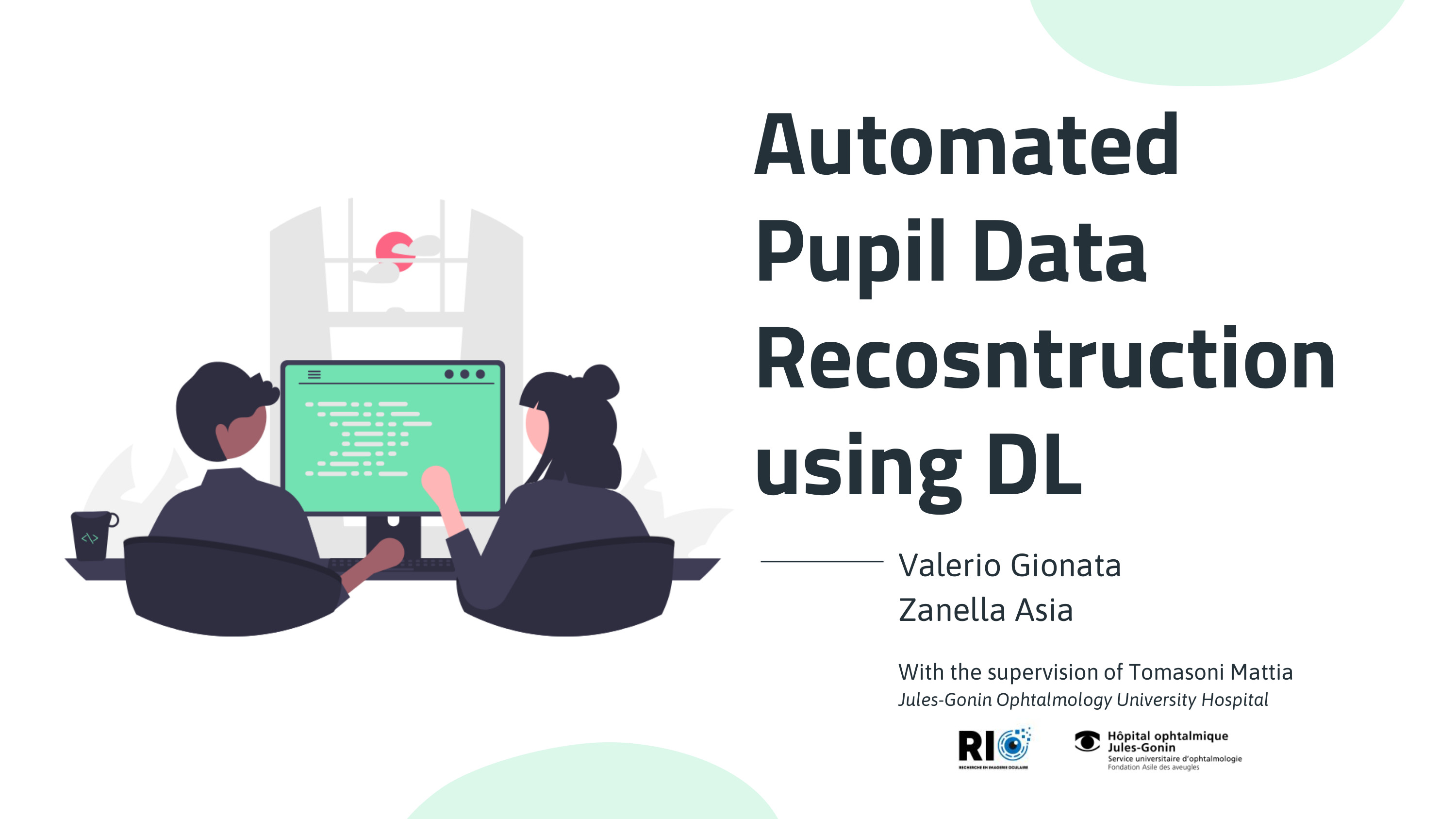Difference between revisions of "Automated Pupil Data Recosntruction using DL"
(No difference)
| |
Latest revision as of 09:55, 5 June 2024
Authors
Gionata Valerio & Asia Zanella with the supervision of Mattia Tomasoni
Abstract
Our project aims to fully automate the analysis of pupil reaction data, which is crucial for evaluating retinal integrity, rod and cone activity, and diagnosing various brain diseases and emotional responses. By leveraging Deep Learning (DL) models, specifically Long Short-Term Memory (LSTM) networks, we seek to enhance the accuracy and efficiency of detecting and removing artifacts from pupil measurements.
In collaboration with Jules-Gonin Ophthalmology Hospital, we conducted extensive research and development, training multiple DL models and conducting a grid search to identify the most suitable model and parameters. The project involved significant computational efforts, intermediate graphical representations, and a comprehensive evaluation of different models' performances.
Our findings indicate that LSTM models outperform other approaches like Convolutional Neural Networks (CNNs) and Recurrent Neural Networks (RNNs) in processing sequential pupil data due to their ability to retain previous information in the sequence, leading to more accurate predictions.
Looking forward, further refinement of models, increasing training epochs, and exploring the implementation of Transformer algorithms could enhance system capabilities. This project demonstrates the potential of DL in medical data analysis and paves the way for future advancements in automated diagnostic tools.
